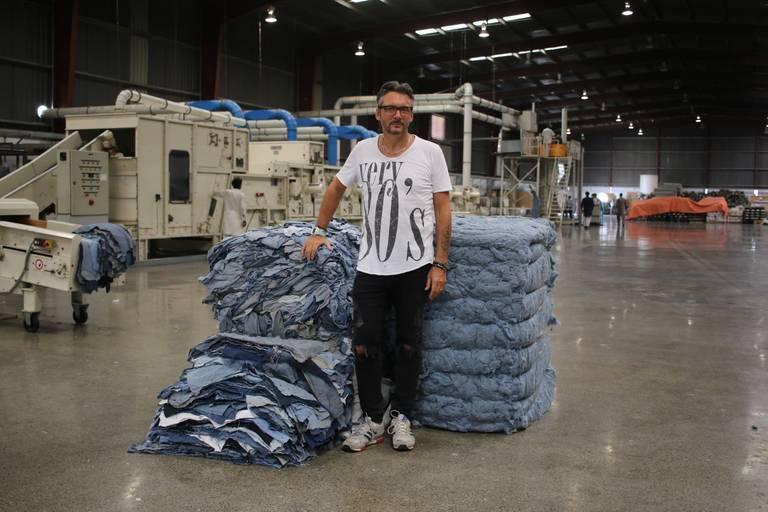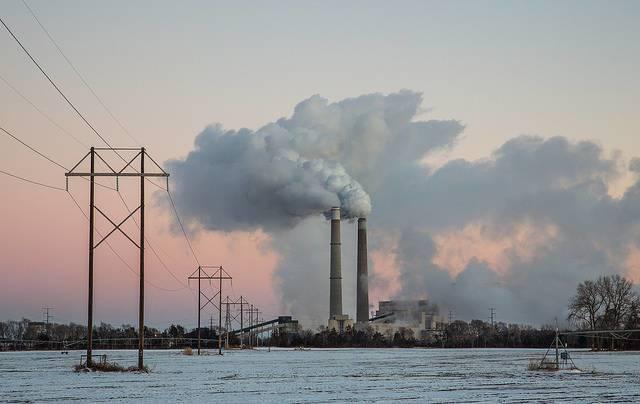Coming to Your Thanksgiving Table: Traceability for Turkey


Thanksgiving is less than three weeks away, which means a great time ahead for (most) families, but a terrible time for turkeys. Approximately 46 million turkeys are consumed every year on the fourth Thursday of November.
Those numbers are impressive, or grisly, depending on your point of view. The encouraging news is that consumers increasingly seek a more responsible and ethical meal. That could mean organic or local ingredients, or more responsibly sourced turkeys.
To that end, Honeysuckle White turkeys, a brand owned by Cargill, has announced that some shoppers in Texas will be able to trace the origins of their holiday birds. A code from the turkey's packaging can be plugged into the company's web page; the user then can see photos and videos of the farm, learn about the farm's owners and will view a statement from the farmer.
Honeysuckle White claims it is the first turkey brand to take its products to this level of transparency. The pilot program aims to gauge the value of traceability within the industry's supply chain and hinted it would roll out the program even wider should there be interest from consumers.
Such a move is an important step for Cargill to take because of the nature of its supply chain. As is the case of its competitors within the meat industry, such as Hormel and Tyson Foods, the company does not own all means of its production - instead these companies often enter contractual arrangements with independent farmers. To these companies' marketing departments, such relationships offer a great narrative, as they can claim they work with "family farms." While that description is usually technically accurate, to the industry's critics, the result could be a lack of oversight that leads to dodgy animal welfare practices or shoddy treatment of workers within their supply chains.
In recent years, all of these companies have pledged to rectify any problems within their supplier base, whether they tackle the usual culprits such as palm oil plantations or leverage technology in an effort to improve animal welfare. Traceability is one way in which to build trust with stakeholders while strengthening their bonds with consumers, who have many choices of a Thanksgiving bird during the holidays.
Whether consumers will buy into these stories about teaching valuable life lessons to grandchildren or environmental awards won by turkey farmers is an open question. The more savvy consumers will most likely go a step further and do a quick search engine search to make sure their turkey had no links to pollution or poor treatment of workers. But if this move can encourage farmers to become more responsible while boosting their sales, this traceability pilot could be a landmark step - and could encourage other meat producers to do the same.
Image credit: Pulaw/Flickr
Americans Eating Fewer Leftovers, Food Waste on the Rise


We’ve all done it: we ordered that massive bowl of pasta or a few too many dishes at the local Chinese or Indian restaurant. No problem, we just have the leftovers boxed up as we look forward to nuking them tomorrow for lunch or even adding a fried egg on top for breakfast. Then as we hop the train or into the car home, we realized: that darned box of leftovers was forgotten on the table.
But according to the Natural Resources Defense Council (NRDC), now we are often not eating those leftovers, period. As a result, the average American wastes 3.5 pounds of food a week - 2.5 pounds of which is still edible.
All of us are guilty - the NRDC’s recent study found that food waste did not vary much by income level, how often we eat in or out, what language we speak at home, or ethnicity. And awareness or ignorance of America’s food waste problem - up to 40 percent of it is wasted, suggests many studies - proved not to be much of a factor, either.
NRDC researchers worked with families in Denver, Memphis and New York City to get accurate results to the study. Participating households agreed to log kitchen diaries for a week, in which they monitored food wasted by type, weight, the reason why it was tossed out, and its final destination (as in the trash, down the garbage disposal, or to the family dog.)
The over 1,000 households that the NRDC surveyed also agreed to have the NGO’s researchers check their trash cans during the project.
In following up with these families, most of them told NRDC researchers that the reasons why the tossed out food is that they believed it was no longer edible, or in the case of leftovers, did not care to eat them after all. NRDC further crunched the numbers and found that after the retailer and commercial food sales industry, restaurants and caterers were the second largest contributors to municipal food waste - accounting for anywhere from one-fifth to one-third of the food waste from city to city.
So how can consumers, the food industry and cities tackle food waste? Every city will have to calibrate their plans based on local realities. New Yorkers living in small kitchens, for example, do not have the space for multiple recycling bins - a single-stream system operating in cities such as San Francisco would be more realistic. Streamlined donations laws would also help food reach those at at risk to food insecurity. More families would be willing to compost if it were convenient - and if they did not live in a building susceptible to ants or cockroaches. Restaurants could also do their part and slim down those portions (which could help with confronting America's obesity problem, too).
Finally, a cultural shift is needed. Americans spend far less of their income on food now than in previous generations, so many consumers do not think twice about ditching leftovers knowing tomorrow’s lunch will be a relatively cheap option. Equating conservation with patriotism, as in the victory gardens of our great-grandparents’ time during World War II, will not happen anytime soon. But popular media could play a role, especially during this time when Instagram food pics and cable TV’s Food Network have made photogenic food trendy. The reality show Chopped, for example, has had leftovers as the mainstays of cooking competition in the past.
Image credit: Wally Gobetz/Flickr
UK grocery chains focus on responsible initiatives


By Brian Collett — Waitrose, one of Britain’s largest supermarket chains, has taken another step towards its target of making all own-label packaging reusable or home-compostable by 2025.
The cardboard packaging of the 26 million sandwiches sold by Waitrose annually is now easily separated with a peelable tab from the plastic film, which is non-recyclable.
Even if customers bin the whole pack, recycling processors can separate the two parts.
Waitrose, part of the huge John Lewis department store firm, claims to be the first supermarket group to offer this environmental benefit.
Packaging manager Karen Graley said: “The change to our sandwich packaging may seem like a small one but it’s likely to make a big impact on the amount of packaging recycled.
“We continue to work on a solution to the pack’s plastic film in the hope that in the future none of the sandwich pack will go to landfill.”
The policy is seen as evidence that, despite the intensely competitive – some would say cut-throat – UK grocery marketplace, companies are nevertheless adopting ethical practices.
Waitrose says that, as well as cutting packaging waste, it is reducing carbon dioxide emissions and sourcing food responsibly.
It makes another claim, that it is the only supermarket group guaranteeing that all its fruit and vegetable growers meet the environmental and sustainability standards set by the industry organisation LEAF Marque.
At least four other household-name grocery chains have turned their attention to ethically responsible projects.
Tesco, the biggest, has its Bags of Help grant scheme, which has used sales of plastic carriers at 5p each to invest more than £30m ($39m, €33.6m) in community projects. The schemes include improving community buildings and outdoor spaces, buying new equipment and hosting events.
The projects are run in partnership with the Birmingham-based environmental NGO Groundwork.
Tesco has added to its effort this summer by introducing more durable 10p carriers, made from 94 per cent recyclable plastic, which are replaced free for customers if broken or damaged.
Marks & Spencer, the diversified groceries, clothes and home products store group, says its new sustainability Plan A 2025 will support 1,000 communities, help ten million people to live happier healthier lives and convert the company into a zero-waste business.
The aims are to make all packaging “widely recyclable”, raise £25m for cancer, heart disease, mental illness, loneliness and dementia charities, reward customers for making healthy food choices, and eliminate waste in its supply chain in addition to its own operations.
Chief executive Steve Rowe says: “We believe we can engage all of our 32 million customers, 85,000 colleagues and 200,000 shareholders in the plan that becomes a mass voice for sustainable change.”
The original Plan A achievements, claims the company, include making M&S the world’s first and only carbon-neutral big retailer and cutting carrier bag use by 80 per cent. Four billion fewer carrier bags have been handed out since 2008.
Morrisons says it continues to lead the market through its commitment to buying British meat. All Morrisons-branded fresh meat and milk is British, which means the policy minimises transport use and air pollution, besides benefiting businesses at home.
The company says: “At the core of the programme are our supply chain groups that help us to ensure that the work we do is fully focused on current practical issues affecting suppliers and their concerns for the future.
“The groups are comprised of farmers and processors and cover all species – beef, pork, lamb, chicken, eggs, cheese and milk.”
Through its charity programme, another of its CSR efforts, 2.3 million unsold items have been donated to community groups.
The J. Sainsbury commitment is to waste less and save more. The company says: “Sainsbury’s is on a mission to change the way we think about the food we buy, cook, eat – and throw away.”
It has produced recipes, videos and articles to help customers to hold down their food bills, including advice on using leftovers. As part of its programme it has earmarked £1m to invest in UK communities committed to tackling waste.
Are there signs that ethical policies are bringing business benefits? It may be significant that after a spell of financial troubles Tesco has posted a £562m pre-tax profit for the first half of 2017.
http://www.waitrose.com/content/waitrose/en/home/inspiration/about_waitrose/the_waitrose_way.html
https://www.tesco.com/carrier-bags/
http://corporate.marksandspencer.com/plan-a
https://www.morrisons-corporate.com/CR/?utm_source=groceries&utm_medium=internal&utm_campaign=footer_link
http://www.j-sainsbury.co.uk/about-us/live-well-for-less
Salesforce.org, From Corporate Philanthropy to Social Enterprise


For 18 years, Salesforce.org has been central to the customer relationship management (CRM) and cloud computing giant’s culture. The company has long touted what it describes its technology as a powerful equalizer that provides access to data and knowledge to NGOs and educational institutions.
This strategy is about far more than Salesforce simply cutting checks to what it sees as worthy causes: this is about a social enterprise striving to create an endless circle of doing good. The company offers its technology platforms at a discount or even at no cost to NGOs and higher education organizations. In addition, this spirit of giving is inculcated throughout the company as employees are encouraged to give back and volunteer in their local communities. Finally, the company provides grants based on local needs, employees’ feedback and how its technologies can best help schools and non-profits succeed.
On top of that, Salesforce.org also encourages other companies and entrepreneurs to follow its lead by pledging to donate 1 percent of its resources. Such contributions could involve time, equity, product and profit, or a combination of these four. In return for making this pledge, companies have access to the body of resources, case studies and one-on-one guidance that Salesforce has amassed over the years.
This week, Dreamforce 2017 convenes in San Francisco. Thousands of professionals meet to learn, listen and network at over 2,700 sessions and events across the city. Attending his 15th Dreamforce is Rob Acker, CEO of Salesforce.org. At his opening keynote, Rob told the audience noted the current political and cultural climate, adding that while technology has been one reason for accelerating progress, it has also been the source, and means to express much frustration. Nevertheless, he revved up the audience with a message of hope.
"We have the biggest army of citizen philanthropists now than at any time," he said this morning, in a nod to how millennials are transforming how business conducts itself. "But how do we move from mission to movement, and move fast in a fractured world?"
TriplePundit interviewed Rob as the organization prepared for this week’s conference.
TriplePundit: Dreamforce is the largest nonprofit tech event -- what are you most excited about?
Rob Acker: This is my 15th Dreamforce, and each year I continue to leave even more inspired by our community of partners, customers and trailblazers. Dreamforce brings together our community of nonprofits and education institutions to learn from one another, and take that inspiration back into the world with the goal of making a difference. This year I am particularly excited about a couple things.
First, in 2018, we'll be expanding our focus through a one-stop app for personal philanthropy, a new channel to connect employees within corporations and causes. In addition, we're also bringing to market a new solution for the higher education space that enables colleges and universities to keep students on track to graduate on time. Called Salesforce Advisor Link, advisors are able to scale their impact, build trusted relationships, and focus on improving student graduation metrics.
3p: How does Salesforce.org differ from a traditional corporate philanthropy? How did it evolve?
RA: We believe philanthropy is more than giving. As a technology company, a nonprofit, a philanthropy, and a social enterprise - we’re in the business of impact. The 1-1-1 model laid the foundation for us to grow into the social enterprise model we are today.
Our philosophy is that technology, when used for social good, can change the world and we strive to make our solutions effective and available to nonprofit and educational institutions around the world. Today, as more pressure falls onto nonprofits and educators to create change, it’s crucial that they’re armed with the tools they need to drive impact. The more successful they are, the more we can invest into improving solutions that meet the needs of the ever-changing social sector.
Our donation and discount-based pricing structure not only allow equal access to our products for organizations of all sizes, but also provide the financial support for us to re-invest in our technology solutions and communities. As a result, more organizations have access to the tools they need, we can continuously improve our technology solutions, and our community can create even more impact.
3p: Since you don't come from a traditional non-profit background, how do your business background and 17 years at Salesforce contribute to your perspective and the way you run Salesforce.org? What unusual or unique business strategies would you suggest to other nonprofit business leaders who want to break the mold?
RA: Think, act and measure differently - recognize you are running a business. Culturally, we have to recognize that we are in the business of doing good. That requires measuring impact, results, and being bold. Harness the data you have to move fast, fail fast, and double down on success. We, in the non-profit community, need to shift from being afraid to fail, to taking calculated measured risks without being driven by fear of failure.
Act differently. Social enterprises are the wave of the future, and to be successful you need to have a sustainable model. You can't rely on equity or a company handout forever.
Measure differently. Leverage technology to know your audience, know your data and know your impact. Your audience wants individual experiences, and technology tells you more about your customers and audiences that can connect you the community and to the individual. And most importantly, measure your impact!
3p: At last count, you've got 32,000 non-profits and education institutions using your software. Many would say your integrated philanthropy model is a huge success and few businesses compare to you on this front. So how do you see Salesforce.org even making more of a difference in the next few years? What do you see on the horizon?
RA: The success of our integrated model is about focusing on what we do best - empowering the Trailblazer with the technology that allows them to connect, organize and scale so they can go further and faster than ever before. Hand-in-hand with that technology, we empower our passionate and engaged employees to leverage their time and talent in the service of the causes they care about most.
One of the things I’m excited about in the next phase of this journey is how we’ll enable nonprofits to have even more impact with artificial intelligence. We’ve made new improvements in our technology through Salesforce Einstein, Artificial Intelligence for CRM. Nonprofits now have even more tools to work smarter with more data than ever before, and understand their metrics on a whole new level.
This also means that any nonprofit, regardless of size or industry, can take advantage of our technology to make impact at scale - enabling them to understand, drive and predict outcomes like never before. For example, Einstein predictive abilities can help nonprofits determine the next best step in order to help close a major gift or identify which donations may be at risk, so that the development team can provide additional info and attention to the donor.
The numbers show that Salesforce.org’s approach is working. The company says that to date, it has given over $168 million in grants while its employees have logged 2.3 million hours of community service.
Image credit: Dreamforce/Facebook
150 Organizations Call for Ban on ‘Biodegradable’ Plastic Packaging


For several years, oxo-degradable plastic packaging was hailed as one solution to cope with mounting pollution and overwhelmed municipal waste streams. These materials could be made out of conventional plastic resins, such as polyethylene, polypropylene or polystyrene, with ingredients such as metal salts added to hasten disintegration. This grade of packaging also includes plant-based resins that could biodegrade in industrial composting or biogas generating facilities.
But today, 150 various organizations, including the Ellen MacArthur Foundation, have announced that the science suggests that these plastics are contributing to, not alleviating, the micro-plastic pollution damaging ecosystems worldwide.
The organizations cite research undertaken by universities, government agencies, laboratories, plastic trade associations and NGOs that have concluded oxo-degradable plastics are not suited for long-term reuse, recycling or composting. Instead, evidence has shown that these plastics often fragment into small pieces often not visible to the naked eye; those microplastic particles in turn often end up in both soil and oceans.
“The available evidence overwhelmingly suggests oxo-degradable plastics do not achieve what their producers claim and instead contribute to microplastic pollution,” said Rob Opsomer of the Ellen MacArthur Foundation in an emailed statement to TriplePundit. “In addition, these materials are not suited for effective long-term reuse, recycling at scale or composting, meaning they cannot be part of a circular economy.”
Some companies and governments have responded to concerns about oxo-degradable plastics by restricting their use, particularly within Europe. In the United Kingdom, retailers such as Tesco stopped distributing plastic bags made out of oxo-degradable resins. France banned the use of oxo-degradable plastics altogether in 2015; a similar ban in Spain will begin next year.
The problem, however, is that oxo-degradable plastics are still manufactured in many European countries. The packaging is then marketed and sold across the world with the promise that it is safely biodegradable. Several countries in the Middle East and Africa, including the United Arab Emirates, Saudi Arabia, South Africa and Ghana, encourage the distribution of oxo-degradable plastics, or have even made their use mandatory.
The signatories of this letter insist oxo-degradable plastic packaging be banned until extensive, independent third-party research and testing based on widely accepted international standards can confirm these materials can actually biodegrade without any harm to the environment. Furthermore, the organizations say more research and innovation are needed to develop plastics that can biodegrade in different environments over a period of time short enough so that particles do not to accumulate in soil or oceans.
In the meantime, the Ellen MacArthur Foundation’s New Plastics Economy initiative seeks a zero waste and regenerative system that can work with innovations in plastic. Such materials would be designed so they do not create waste and pollution; they would also encourage the manufacture of products and materials that not only have a high value, but would fall in line with the what the NGO says are the principles of a circular economy.
Organizations that say they are aligned with the Ellen MacArthur Foundation include Marks and Spencer, PepsiCo, Unilever, Veolia and World Wildlife Fund (WWF).
“Using oxo-degradable additives is not a solution for litter. Their use in waste management systems will likely cause negative outcomes for the environment and communities,” said Erin Simon, Director of Sustainability Research and Development at WWF. “When confidential public policy supports the cascading use of materials – systems where materials get reused over and over, this strengthens economies and drives the development of smarter materials management systems. This leads to wins for both the environment and society.”
Image credit: Ellen MacArthur Foundation
Papa John’s and the NFL: Just Another Excuse to Mask Poor Sales Performance?


The newswires, and social media, have been buzzing over Papa John’s CEO blaming the National Football League for his company’s decline in sales. “The NFL has hurt us. More importantly, by not resolving the current debacle to the players’ and owners’ satisfaction,” John Schnatter said in a recent earnings call.
DiGiorno Pizza in particular was quick to throw some shade on Schnatter’s charge that the "take a knee" controversy affects his company’s performance:
[embed]https://twitter.com/DiGiornoPizza/status/925751603478650880[/embed]
Schnatter ratcheted up his displeasure with the NFL over the weekend, when he told the Wall Street Journal that he may reconsider his company’s sponsorship of the league. Many talking heads in the professional sports world said that banter was more about team owners’ increasing displeasure with Roger Goodell, who has been head of the NFL since 2006. In recent years, Goodell has watched his tenure become rocky over a bevy of problems. Those billionaire owners who want to serve Goodell’s head on a plate may be very well to do so, only in the form of a pizza box instead.
Critics of the NFL this year, including President Trump, have been emboldened over the national anthem kerfuffle that started last year when Colin Kaepernick began taking a knee over what he said was the mistreatment of racial minorities in America. The controversy had almost died down when Trump reignited it by describing such players as a “son of a bitch” during a late September campaign stop in Alabama. In the name of the flag and veterans, Trump and many of his supporters have been gleeful over the NFL’s declining ratings, which have taken another big hit this year.
But the reasons for the slump in NFL viewership is far more complicated - and considering the history of the national anthem at NFL games, that debate is a manufactured controversy anyway. The bottom line is that an ongoing perception, fair or not, is that the quality of play has been terrible - there are really no standout teams this year. Controversies over domestic violence, brain injuries and CTE and they way the league has handled franchise moves to Los Angeles and Las Vegas have soured fans. Plus the league has a technology problem - everyone’s favorite demographic to hype and ridicule, millennials, simply aren’t watching the games as they are happy to just get updates on their phones. That is, if they even pay attention at all.
Back to Papa John’s: The pizza chain’s challenges are more than about the NFL. The company’s messages, on one hand, have been mixed. For example, earlier this year, Schnatter bashed the excesses of executive pay. But the company’s labor practices have long come under scrutiny, to the point the company admitted that such investigations posed a material risk to its business. Rogue franchisees have also been an pesky headache for Papa John’s. Schnatter claims he pays well above the minimum wage, but reviews of the company’s pay and culture are middling at best.
Then, when Schnatter and the company should have just stayed quiet, Papa John’s responded to calls that as a result of the national anthem story, the company had become the “official pizza of the alt-right.” The company quickly took the bait as it issued a public statement that said it did not want racists to buy its pizza. Hence the company burned some bridges while leaving others underwater - not a risk any conventional fast food company should take, considering younger consumers are increasingly buying food products and meals from companies that have some kind of social or environmental mission.
The stubborn fact is that when most companies hit a rough patch, the reasons are almost always self-inflicted - they either embarked on a bad strategy, or did not have the vision to see changing market trends in the first place. And instead of blaming the NFL, the company could just focus on its product, as The Atlantic recently opined.
“Could it be that, instead of ‘Better Ingredients. Better Pizza,’ customers seeking a quick pizza fix now simply have “Better Options”?,” asked Megan Garber last Friday.
Image credit: Paul L. Rivera/Flickr
New Life for Denim: Post-Consumer Waste Jeans


By David Shuck, Heddels
It’s no secret that we buy more clothes than we can actually use. Americans alone toss out more than 13 million tons of clothing annually, but even if you’re donating your garments to a charitable organization, they could still be destined for a landfill. Such effects of fast fashion have driven apparel to the number two polluting industry in the world.
But textile and apparel manufacturers have been taking note of the environmental imperative created by fashion’s resource drain. Many upstream companies have begun implementing greener standards before most people have started to demand them. A big difficulty for manufacturers though is creating a more sustainable product without increasing the cost to end consumers who might not understand why they’re paying more.
Many upstream producers, like Artistic Fabric & Garment Industries in Pakistan are stepping up to reduce the impact of their business. AFGI’s latest effort aims to “close the cycle” by transforming those post-consumer waste (PCW) garments before they hit the landfill and recycle them into cotton fibers.
Their PCW recycling system can process up to 1,700 pounds of denim fabric per hour, which can then be spun and woven back in with new cotton for completely new jeans. We had a firsthand tour with the system’s designer, Ampelio Del Lago, which you can view above.
“PCW is one way that we can save cotton and recover all the wastages from the market.” Del Lago explains, “We buy garments that are ready to throw in the garbage. We take the fabric and there are six different steps of shredding that, one by one, open it from a simple fabric to a loose fiber at the end.”
The grinding and cutting of the enormous machine is nearly deafening, but small windows reveal its inner workings. Giant grinding gears transform the whole denim panels from the original jeans into light and fluffy cotton.
“This is then blended with virgin cotton, which has the opportunity to make one yarn that is sustainable, mixing 30 percent in the warp.” Del Lago concedes, “We cannot make a yarn that is 100 percent [PCW], the fiber is too short and the yarn was having a lot of breakages.” Such breakages would lead to weaker finished garments that would degrade even sooner in the hands of the consumer. The blended yarns, however, are practically indistinguishable.
There are real business benefits to recycling as well, “We save on cotton production, we save a lot of chemicals--X, Y, Z. After that, the benefit is entirely to the consumer if they also have a sustainable mentality.” Del Lago believes this is ultimately a way to offset the negative effects of fast fashion, “The retailers have reduced the price such that consumers often only use one jean for one season then they throw [away]. How many used jeans are there in the world? A part of this, we can recover and retransform into new jeans.”
The recycled cotton denim makes for a more sustainable garment while keeping the price pretty much the same for the end consumer. AFGI already has interest from a number of larger denim makers who are also looking to promote more sustainable product, and there are systems like AFGI’s PCW popping up amongst many other global denim manufacturers.
Consumer demand for newer and cheaper apparel may never die, but with more manufacturer efforts for recycling and sustainability, hopefully the remains of their discarded clothes will live forever.
For more info on AFGI’s recycling system, check out their website.
Heddels is an online publication that aims to help people understand and find well-made clothing and goods that improve with use.
Image and video credit: Open-End Agency and Heddels
Nestlé’s Switch to Cage-Fee Eggs Demonstrates Why Companies Can’t Ignore Millennials


Last week, Nestlé announced that it will commit to sourcing only cage-free eggs across its entire global supply chain by 2025. This pledge comes almost two years after its U.S. division said it would switch to cage-free eggs for its food brands by 2020.
It's a big commitment. The Humane Society of the United States has noted that cage-free hens have a relatively better life than those condemned to painful confinement in a battery cage. Nevertheless, to many animal rights activists, cage-free is still a pretty dire existence. The Humane Society insists that hatcheries within this system still kill the vast majority of male birds after birth; partial beak removal is still the norm; many are slaughtered before they reach the age of two; and starvation to force birds to molt in sync is still a common practice.
Furthermore, concerns over animal welfare and questions over the poultry industry’s environmental sustainability still leaves a wide door open for companies like Hampton Creek that seek plant-based alternatives to the chicken egg.
Nevertheless, the announcement coming out of Nestlé’s Switzerland headquarters demonstrates a growing trend: Food companies that ignore millennials do so at their own peril.
“The wrath of millennials and other concerned consumers comes down especially hard on companies stuck behind the trend of improved animal welfare,” wrote Brett Cox for Entrepreneur earlier this year.
Cox cited a 2015 study by the NGO World Animal Protection stating that 83 percent of millennials surveyed say they consider a company’s animal welfare policies when considering food purchases.
News outlets such as the Washington Post also give younger consumers credit for pushing global food companies and industry trade groups to change their ways. Anyone old enough to remember following the news in the 1980s and 1990s remembers the antics of animal rights groups, which employed tactics such as throwing paint on people wearing fur coats or setting slaughterhouses ablaze.
For those passionate about animal rights, the acting out and moral outrage at how animals have been treated in factory farms and labs may be understandable.
Those actions, however, failed to move the needle. Companies respond to cooperation, not extremism.
Now, animal welfare groups strive to be partners, not adversaries. Partnership, and yes, that overused word, “collaboration,” are the modus operandi. “Most influential activists negotiate with corporations and egg producers – not to liberate chickens but to get them roomier living conditions,” wrote Karin Brulliard for the Post in August 2016.
True, these chickens are still not living the idyllic life shown in books at the children’s section of your local library. But this news from Nestlé is still a huge step forward.
And Nestlé really has no choice. Today’s consumers may not share the same fond memories that their parents and grandparents had of noshing on a Crunch bar or an ice cream Drumstick. These new market realities mean the time for food companies to launch more responsible sourcing was many yesterday’s ago.
This long-term risk to its business is why Nestlé and its peers are embarking on plans such as eliminating deforestation from their chocolate supply chains; removing artificial colors and flavorings from products even if the reasons border more on exaggerated concerns than science; and scrambling to ensure their palm oil supplies are not linked to environmental degradation or human rights violations. Kudos to Nestle for sure, but it was only a matter of time before the cage-free eggs box was checked on Nestlé’s list, too.
Image credit: Liz West/Flickr
Falling Oil Demand May Eliminate a Quarter of the World's Refining Capacity


In what is often called a "2⁰C world," falling demand for oil means that a quarter of the world's refining capacity may not be necessary by 2030.
At least, that is the assessment offered by Carbon Tracker, a London-based think tank that studies the impact of the global energy transition on capital markets. The group partnered with the Danish pension fund PKA and Swedish pension fund AP7 on this report, Margin Call: Refining Capacity in a 2⁰C World.
Carbon Tracker's researchers analyzed 492 refineries, which combined account for 94 percent of the world's total oil capacity. The think tank says its study is likely the first analysis that gauges how the energy sector would perform as governments and companies scramble to meet international objectives to limit climate change to 2°C by ramping up investments in clean energy and technology.
Earlier this year, Carbon Tracker issued a study saying that electric vehicles (EVs) and solar could displace oil and coal by as soon as 2020. And therein lies why oil companies face long-term threats to their business: Carbon Tracker's staff concluded that oil companies may be grossly underestimating the rapid growth and scale of electric vehicles, which could comprise one-third of the global transportation market by 2035.
The global oil and gas industry has long been bullish on its future prospects, due largely to expected growth in emerging economic powerhouses such as China and India. But the specter of Asian megacities rife with polluting fossil fuel-powered cars has recently been displaced by an altered vision of cities still suffering from even more traffic in the future - but largely due to electric cars.
Hence the problem of stranded assets that oil companies' refineries could face in the coming years. Generally, refineries account for about 25 percent of the assets on oil companies’ ledgers. These facilities are valued at tens of billions of dollars and are critical to these energy companies' profitability. But Carbon Tracker's 2˚C scenario modelling found that over the next two decades, many of these companies' profits could crater. Total and Eni are the oil companies most exposed, as they could suffer a 70 to 80 percent drop in their refineries' earnings as worldwide demand decreases. Shell and Chevron also could face a decline ranging from 60 to 70 percent; ExxonMobil and BP could see their earnings fall by as much as half by 2035.
So despite a growing global middle class and population growth, Carbon Tracker insists the convergence of EVs and renewables means that oil companies are most likely beyond their halcyon days. Under this 2˚C scenario, this group's researchers conclude there is plenty of capacity to meet future energy demands. Furthermore, Carbon Tracker warns investors that overall and with few exceptions, the world has no need to add additional refinery capacity.
Andrew Grant, a senior analyst at Carbon Tracker who co-authored the report, envisions many energy companies leaving this market in the years ahead. "Many players will exit the market rather than hemorrhage cash. Investors should beware that the risk of wasting capital extends to all new investments, including expansions or upgrades to existing facilities," said Grant.
Image credit: Jeff S. PhotoArt/Flickr
WRI: Almost 50 Countries Have Reached Peak Emissions


In a study that could give businesses more clarity on how quickly they should ramp up their climate action efforts, the World Resources Institute (WRI) has concluded more countries are on their way to start seeing their annual greenhouse gas emissions begin to decrease. The environmental NGO launched the survey as research covering when total emissions worldwide need to peak is well documented; however, such work gauging when individual countries will reach their peak emissions has been scant.
WRI found that 49 countries have already reached their peak, which represents just over one-third of the globe’s total emissions. By 2030, that number is targeted to increase to 57 countries. That may not seem much of a jump, but these nations are the heavy emitters including the U.S., China, Russia, Japan and Brazil. When included in WRI’s assessment, that total will represent 60 percent of the world’s emissions.
On one hand, the increasing number of countries that have experienced, or are approaching, peak emissions, is encouraging. The result is a “turning point,” as those countries’ emissions are either no longer peaking or will see their levels of emissions decrease in the coming years. The downside, however, is that WRI says that the number of countries that have reached that point is likely not large enough to enable the world’s total emissions to reach peak levels in the near term.
The vast majority of scientific literature indicates that global emissions need to peak by 2020 for the least-cost chance at meeting the 2015 Paris Agreement’s long-term climate change risk reduction goals. The more that these reductions are delayed, the greater the need for faster reductions in the following decades. That means a higher overall cost to these individual countries, not to mention the political fights that would ensue.
The WRI’s recommendations are very common-sense and general. Countries with more long-term peak emissions goals, such as those that expect to reach their highest amount of emissions by 2030, should consider plans that could allow them to reach that level more quickly. The NGO’s researchers also urge countries to be more transparent about their emissions reduction targets so that the scientific community can gauge how far the world is from that 1.5 to 2°C goal mandated by the Paris Accords. Finally, WRI insists that countries in which emissions have already peaked have a role in keeping that momentum going as it could make a difference in the world reaching its aggregate emissions roles.
Political infighting that has been the norm worldwide means much of this responsibility lies on the global business community. Recent trends, however, indicate that companies are up to the task. The recent commitments businesses made to follow science-based emission reduction targets is one hopeful sign; and despite the Trump White House’s decision to exit the global climate agreement, most of the U.S. business community says it is committed to becoming more energy efficient and investing in clean energy technologies. Nevertheless, if more companies accelerate their efforts, there could be less nail-biting as we know we’re close to that tipping point – we just do not know exactly when it will occur.
Image credit: Tony Webster/Flickr